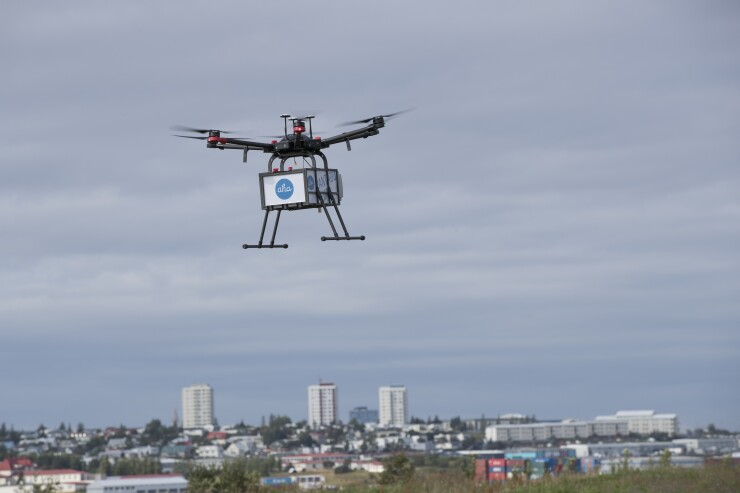The good news is that the more retailers invest in delivery, the more their e-commerce revenue grows. For businesses who’ve made supply chain a top priority, it’s huge validation.
Amazon has taught us there's no need to wait for my next
According to
So where does that leave us in the race to the doorstep? Companies are throwing cash at everything, from drones to self-driving robots to crowdsourcing. Who’s got the best chance of success? How can each one lower costs, increase speed and mitigate risks? Can they disrupt the industry without being, well… disruptive?

Drones entered the mainstream about five years ago as a cool photography gadget. Thanks to falling prices, they’re a hot item on every kid’s Christmas list this year, but they’ve also generated a lot of buzz about their potential application to logistics.
In rural areas, drones have huge promise for parcel delivery. They’re already supplementing human workers in large warehouses – flying to far-flung corners to pick goods on high-up shelves. And they’re working out in the freight yard, too, helping to track and manage trucks, trailers and containers.
Companies like UPS, Amazon, Google and even Domino's Pizza are experimenting with drones in the last mile. One popular model uses a carrier van on the highway as a hub for an armada of drones that fly out of the back to deliver small parcels to nearby homes. It’s an impressive, futuristic version of hub and spoke. Can it work? At what cost?
Just like commercial aviation and the automobile, drones have major hurdles to navigate, especially when we think about how they’ll work at scale. We’ll need major regulatory oversight to address safety, noise and privacy concerns. We’ll need to build control towers, write better algorithms, improve GPS, and figure out what to do about weather. But these challenges will likely all be worked out, given enough in time and investment.
What about autonomous cars and robots? Are they more viable in the near term?
Both autonomous cars and bots cost thousands of dollars per unit to manufacture, though, and depend heavily on human supervision and maintenance. When it comes to flexibility and scalability, is a sidewalk droid really that different from a truck? Both are rigid, asset-heavy systems that require a big capex investment upfront with even higher maintenance and upgrade costs over time.
Think of it this way: earlier this year, actor and comedian Tracy Morgan from
The truth is, even if I had the cash to buy a Bugatti, I could never afford to maintain it. Will a fleet of delivery droids be the same?
Whether it’s drones or robots or some other yet-to-emerge autonomous technology, asset-heavy logistics strategies will always suffer from the same Achilles heel: whether it’s changing wiper blades or switching from lithium batteries to solar – hardware is expensive. And if a new hardware solution can’t solve for the demands of flexibility in the last mile, there will still be a need for something that can.
This doesn’t even take into account all the regulatory hurdles, infrastructure dependencies and real-world obstacles from bikes to baby strollers, pranksters to potholes, larcenists to labor unions.
But what folks aren’t talking about, and what I find most interesting, is the inherent limitations that come with any fixed-asset system.
Drones and robots may well be efficient, and hopefully one day safer. But what happens when a last-minute order comes in and the customer needs delivery now? How do you adjust a pre-planned droid route at the last minute – when the droid has already left the store?





